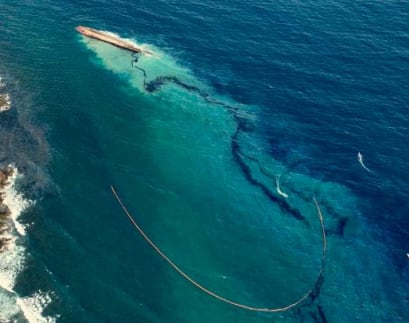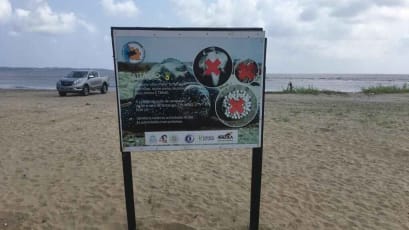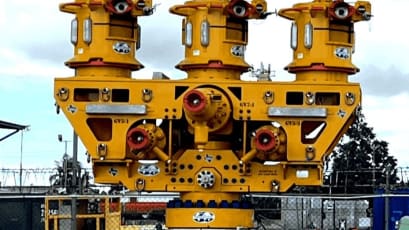Building trust, driving collaboration
We recognise that effective oil spill preparedness and response is fundamentally about people working together. Established, trusted relationships are the foundation for coordinated, rapid, and effective responses when incidents occur.
Our STSE function strives to connect with industry and foster collaboration to support our longer-term mission of providing efficient and effective response services to our members.
We engage proactively with a broad range of stakeholders as part of our commitment under our core membership coverage, promoting good practice and strengthening response capability across the global industry. Our work is international and multi-dimensional, with collaboration touchpoints embedded throughout OSRL's operations.
This proactive engagement enhances our credibility as a trusted partner and technical authority in oil spill response, setting us apart from other commercial response providers and reinforcing the value we deliver to our members.
Through the STSE function, we invest time and expertise into building meaningful relationships with key international organisations, industry bodies, and regulatory stakeholders, including Ipieca, IMO, IOGP, and API. We also work alongside our members to support their direct engagement with governments, regulators, and other key players, facilitating the use of a full range of response tools and helping them maintain their license to operate.
Bridging science and response
Oil spill response is an inherently science-driven discipline. Maintaining strong links with the academic and research community is essential to ensuring that evolving science remains relevant to real-world response operations and that the latest insights can be translated into practical tools and techniques. Our work in this space has become known as "Bridging Science to Response," and it reflects our commitment to grounding our capabilities in the best available, peer-reviewed science and technology.
OSRL supports a wide range of science-led engagements, from attending and presenting at international conferences to funding research, delivering guest lectures, and advising students on careers in the field.
By building and nurturing these academic relationships, we help safeguard existing tools within the response toolbox, including the use of dispersants, shoreline treatment methods, and Net Environmental Benefit Analysis (NEBA)-Spill Impact Mitigation Assessment (SIMA) approaches. We also ensure our strategies reflect a balanced, evidence-led approach to incident management.
We are expanding this programme globally, with an emphasis on strengthening our presence across Asia-Pacific and the Americas to mirror the success of our academic partnerships in the Europe, Middle East and Africa (EMEA) region. Alongside in-person engagement, we actively promote key industry guidance and share our work via digital channels to ensure consistency of messaging and increase visibility across the wider community.
Shaping the future of spill response
Beyond maintaining current tools and practices, OSRL actively participates in shaping the next generation of spill response technologies and techniques. By contributing operational insight to academic research, we ensure that new ideas and innovations are grounded in the realities of field deployment.
Our STSE team collaborates closely with our internal subject matter experts and member company specialists to identify and progress joint research opportunities, from response evolution and aviation to subsea intervention and emerging technologies. These collaborations help drive innovation across the wider industry, including support for discrete research and development initiatives that address gaps created by reduced in-house research and development within some member organisations.
Leading the future of dispersant response
Providing world-class dispersant services is central to OSRL's Tier 3 offshore response capability. We operate the world's largest globally distributed dispersant stockpile, with advanced application and monitoring technologies spanning aviation and subsea sectors.
OSRL continues to strengthen its role as a technical authority, advocating for the responsible use of dispersants through NEBA-SIMA frameworks and close collaboration with industry bodies, regulators, and research institutions. We are actively supporting the implementation of the 2024 IMO dispersant guidelines and working to enhance global standards, policy consistency, and public understanding through expanded stakeholder engagement.
As industry transitions continue, we're investing in new technologies, including autonomous systems, AI, and mechanical dispersion, and ensuring our teams remain at the forefront of operational excellence. We're also addressing vulnerabilities in the global dispersant supply chain by participating in industry-wide initiatives and maintaining our capacity to mobilise rapidly, even as regulatory landscapes evolve.
Our commitment is clear - to deliver trusted, science-based dispersant response solutions, protect critical tools in the response toolbox, and help shape a more resilient future for the global oil and gas industry.
Integrating wildlife into tiered preparedness and response, through multi-stakeholder collaboration
Wildlife emergency preparedness and response (WEPR) is a vital element of OSRL's commitment to holistic spill response. As the only Tier 3 response organisation with integrated wildlife response services, OSRL is uniquely positioned to drive progress across the industry by fostering global partnerships and advancing good practice.
Through strong collaboration with organisations such as Sea Alarm and GOWRS, we support our Members in building proactive, tiered preparedness strategies that are grounded in science and aligned with Ipieca principles. Our role as both a technical authority and a connector helps unify stakeholders from industry to NGOs, around a shared vision for effective wildlife response.
We continue to invest in operational capability, refining our core membership coverage and equipment stockpiles in collaboration with expert partners. At the same time, we raise awareness and build internal and external advocacy through regular engagement, training, and communications.
By integrating wildlife response into the broader preparedness and response landscape, OSRL helps ensure wildlife protection is a core part of incident planning. Our efforts contribute to a more resilient global response system and enable our members to meet evolving expectations with confidence and credibility.
View our latest case studies

Turning the Tide: Crisis management lessons from the Tobago oil spill incident

Enhancing Wildlife Response Through Tier 3 Integration



